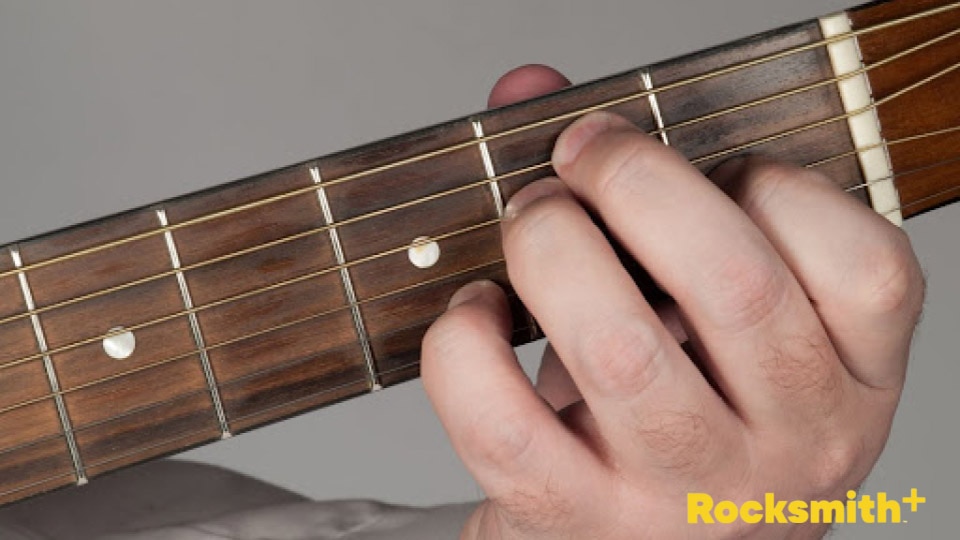The E7 chord, with its unmistakable sound, holds a special place in the hearts of guitarists. Widely recognized for its soulful, bluesy undertones, E7 often features heavily in many compositions spanning genres like jazz, blues, rock, and even folk.
This dominant 7th chord, while straightforward to play in its basic form, offers a depth that can be explored through different voicings.
By mastering multiple ways to play E7, guitarists can enrich their sound palette and navigate the fretboard with enhanced fluidity. This article unveils four diverse fingerings for E7, aiming to arm the guitarist with the versatility and adaptability needed in varied musical contexts.
Understanding the E7 Chord
Before delving into the various ways to play E7, it's crucial to understand its musical anatomy. At its core, a dominant 7th chord is characterized by four specific notes: the root, major third, perfect fifth, and minor seventh. In the case of E7, these notes are E (the root), G# (the major third), B (the perfect fifth), and D (the minor seventh).
When these notes blend, they produce the chord's distinct sound --- a mix of stability from the root and a tinge of tension from the minor seventh. This unique blend is what gives the E7 chord its characteristic pull, tension, and release. E7 often resolves to another chord, making it a favorite for evocative musical transitions.
As we venture into the various positions to play E7 on the guitar, keep these foundational notes in mind. Recognizing them across the fretboard will not only aid in mastering the suggested fingerings but also empower you to experiment and discover your own variations.
1. Open E7 Chord
![[RS+] How To Play E7 on Guitar 4 Different Ways SEO ARTICLE - open e7](http://staticctf.ubisoft.com/J3yJr34U2pZ2Ieem48Dwy9uqj5PNUQTn/7bVxmPCPAmlCoMdcihW2bv/aa82da4c9d9aaa9418d507cd0f710cae/e7.png)
Among the first chords many budding guitarists learn, the open E7 chord is as iconic as it is accessible. To master this version:
- Place your 2nd finger on the 2nd fret of the A string (giving you the B note).
- Place your 1st finger on the 1st fret of the G string for the G# note).
- The rest of the strings are played open, which means you won't place your fingers on any frets of these strings to play E7. The open notes in this chord come from the low E string, high E string, and D string.
The open E7 boasts a full, rich sound, largely due to the vibrations from the open strings of low E and high E. This chord provides a broad tonal range, with both bass and treble notes ringing out.
Its expansive and harmonious quality makes it perfect for genres like folk and country. Additionally, in blues and rock progressions, the open E7 often serves as an anchor, providing a strong foundational sound.
2. Barre E7 Chord (Using the A7 Shape)
Taking a step further up the neck, we encounter the barre E7 formed using the A7 shape.
- Barre all strings at the 7th fret with your index finger.
- Using your ring finger, press down on the 9th fret of the D string.
- Your pinky finger should press down on the 9th fret of the B string, thus mimicking the open A7 shape but five frets up.
This version offers a tighter, more compact sound compared to its open counterpart, shifting the tonal center upward. The barre technique helps achieve uniform pressure across all strings, ensuring clarity in each note.
Being midway on the neck, this version is ideal for transitions between other barre chords, especially in pop and rock songs. It can also serve as a bridge between lower and higher chord voicings, enhancing a guitarist's ability to perform a wide range of songs with confidence.
3. Barre E7 Chord (Using the E7 Open Shape)
Taking inspiration from the open E7 shape, this version transfers the open chord qualities further up the neck, introducing a nuanced tonality.
- Barre all the strings at the 12th fret using your index finger.
- Place your 2nd finger on the 13th fret of the G string.
- Place your 3rd finger on the 14th fret of the A string.
This essentially shifts the open E7 shape 12 frets upwards, while the barre takes care of the notes that would typically be open. This rendition exudes a brighter timbre due to its placement higher up the fretboard. The combination of the barred strings and the open chord shape emanates a sound that's both rich and elevated.
The higher pitch makes it apt for moments that require a melodious, ringing quality. It's also effective when transitioning between chords higher on the neck, especially in genres like jazz or progressive rock, where diverse chord voicings are explored.
4. E7: Middle of the Fretboard
This unique version of the E7 chord adds diversity to your repertoire as a guitarist. When writing your own parts or recreating songs by your favorite artists, different voicings like this one help you put your own unique spin on the guitar.
- Place your ring finger on the 7th fret of the fret of the A string.
- Place your second finger on the 6th fret of the D string.
- Place your pinky finger on the 7th fret of the G string.
- Place your index finger on the 5th fret of the B string.
This version of the E7 chord fits into a wide variety of genres and often comes in handy as a rhythm guitarist. When supporting another guitar player who handles lead lines, try using voicings like this one to make a song sound complete.
What Are Some Tips for Clean E7 Chord Transitions?
As with any chord on the guitar, mastering the E7 in its various forms isn't just about understanding positioning. It's also about ensuring smooth transitions both to and from the chord.
Here are some strategies to aid in that endeavor:
-
Hand Positioning: Keep your thumb positioned centrally on the back of the guitar neck. This provides the leverage needed for barre chords and provides the flexibility and space needed for open chords.
-
Finger Flexibility: Regularly practicing finger stretching exercises can be helpful, especially when transitioning between open and barre shapes.
-
Muscle Memory: Repeat chord transitions multiple times. Consistent repetition solidifies muscle memory, ensuring automatic, smooth transitions in actual playing scenarios.
-
Anchor Points: When shifting between versions of E7, identify common fingers or positions (anchor points) to aid in faster and cleaner transitions.
-
Use a Metronome: Starting slow and gradually increasing the tempo, practice transitioning between the E7 variations and other chords to improve timing and speed.
Learning the Ins and Outs of the E7 Chord
The E7 chord, in all its variations, offers guitarists a spectrum of tonal possibilities. By understanding and mastering the diverse ways to play this chord, musicians can significantly expand their playing repertoire, bringing depth and dynamism to their performances.
Whether you're accentuating the bluesy tones of an open E7 or the crisp notes of a triad-based rendition higher up the fretboard, the adaptability of the dominant 7th chord.
We encourage every guitarist to invest time in these variations, not only to enrich their sound but to experience the joy of exploring the vast sonic landscapes the guitar offers. With Rocksmith+, it's not just about playing a chord --- it's about making it your own.
Sources:
Guitar Chords --- The Complete Beginner to Advanced Guide | FaChords Guitar
7th Chords Explained | Guitar Tricks
Seventh Chords: How to Add Richness to Your Songs | Landr Blog
Guitar Chalk Sessions: A Clean Guide to Understanding Seventh Chords | Guitar World









